[THIS POST CONTAINS SEVERAL MOVIE SPOILERS!]
–
“The greatest trick the Devil ever pulled was convincing the world he didn’t exist,” as Roger “Verbal” Kint (Kevin Spacey) so famously – and eloquently – put it in The Usual Suspects. Villains with secret identities and hidden agendas were around long before the world was introduced to Keyser Söze in Bryan Singer’s 1995 film, yet there’s something about a two-faced character that resonates stronger than ever with the masses in the present-day (side-stepping the discussion about parallels to the post-9/11 political climate).
Rebooted superhero comic book adaptations and genre blockbusters have begun to use this trick more and more. This can partly be chalked up to screenwriters and directors who are trying to stay one step ahead of the well-informed fanbase – who know the ins and out of any established baddie – but it’s also an attempt by these filmmakers to adjust to current marketing trends, where so many trailers and TV spots give away surprises and big moments (plot “twists,” money shots) ahead of time.
Question is, are “villains with a twist” more trouble than they’re worth? And, if not, then what’s the “right” way to go about creating one? Well, those are interesting questions, especially now that Iron Man 3 and Star Trek Into Darkness – which both use this archetype – are playing in theaters and giving rise to debates about how effective (or not) their final villain reveals are.
Let’s compare and contrast the antagonists in recent comic book/sci-fi movies with the series that popularized this current trend: filmmaker Christopher Nolan’s Dark Knight trilogy.
FINAL WARNING: MASSIVE SPOILERS AHEAD!
*
**
***
SPOILER WARNING
***
**
*
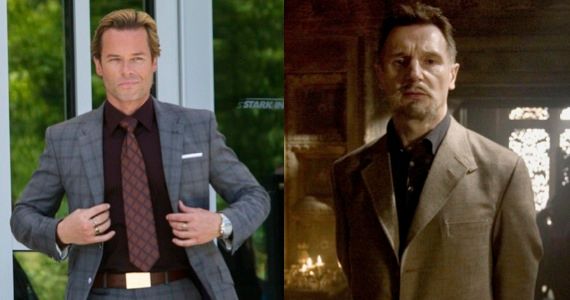
There are a handful of similarities and parallels between the Nolan Batman movie villains and The Mandarin in Iron Man 3, such as:
- The “real Mandarin” is Adrich Killian (Guy Pearce), who hires on another man (Ben Kingsley) to pretend to be the head of the Ten Rings organization in Iron Man 3, similar to how Henry Ducard/Ra’s al Ghul (Liam Neeson) uses a decoy (Ken Watanabe) to feign being the League of Shadows leader in Batman Begins.
- Killian hides behind a respectable face as the founder of A.I.M., while he uses the dangerous Extremis technology and hired thugs in secret. Similarly, Talia al Ghul (Marion Cotillard) passes herself off as noble business woman Miranda Tate – letting the terrorist Bane (Tom Hardy) do her bidding – which allows her to gain access to Wayne Enterprise’s clean energy device-turned-nuclear bomb in The Dark Knight Rises.
- Kingley as The (fake) Mandarin preys on the general population’s hysteria and stereotypes about modern terrorists, similar to how Bruce Wayne is fooled by the (fake) Japanese Ra’s al Ghul and fails to see through Talia’s Miranda Tate facade – since it appeals to Bruce’s (subconscious?) desire to find another woman like the late Rachel Dawes.
And so forth. However, there are important differences that may help to explain why there’ve been more hostile responses to the Mandarin twist in Iron Man 3 than either of the twists in Nolan’s comic book adaptations (though, obviously, not everyone was a fan of those revelations, either).
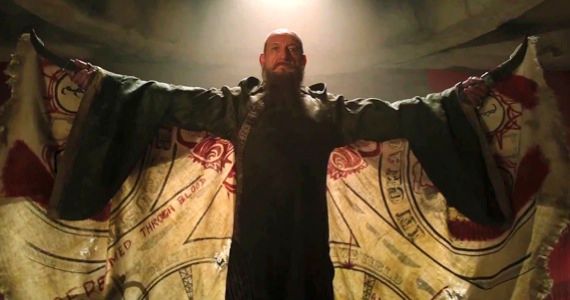
Killian appears to have no real connection to the Ten Rings organization in Iron Man 3 (though the prequel comic book suggests otherwise), whereas those Batman villains all have a well-established link to the League of Shadows in the actual films. Hence, Nolan’s movies form a complete circle, story-wise, while Iron Man 3 doesn’t tie so well together with the first two Iron Man flicks.
Similarly, the beef between Killian and Tony is petty and more strictly philosophical – I’ve compared it before to Batman/Riddler in Batman Forever – while the Bruce and Ra’s conflict is very personal and philosophical (the same is true for Bruce and Bane/Talia). By the time we get to the big boss fight in Iron Man 3, the emotional stakes are lacking in comparison to the climaxes in Nolan’s films.
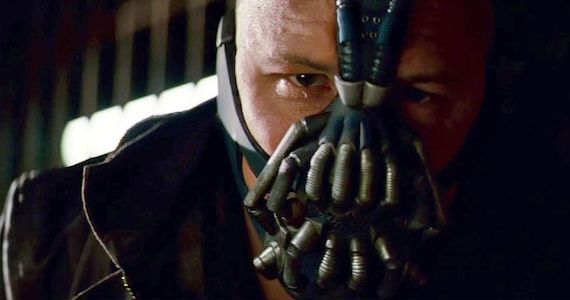
Iron Man 3 starts by making the traditional version of The Mandarin – flamboyant robes, rings and all – work in a modern comic book movie context, but the decision to reveal that Kingsley’s character is a joke (and Killian is the real deal) feels like a cop-out and disrespectful of the fact that the old-school Mandarin was, originally, intended to be taken quite seriously.
Nolan’s Batman films take liberties with their interpretations of characters like Ra’s al Ghul and Bane, but are fully committed to making them work onscreen in a way that honors their pulpy comic book origins (while fitting them into Nolan’s vision of the Batman universe). Iron Man 3 co-writer/director Shane Black, by comparison, dismissed The Mandarin as an outdated (and non-adaptable) racist villain – only to replace him with another stereotype, i.e. the evil U.S. businessman.
_______
NEXT PAGE: How Does Star Trek Into Darkness Compare?
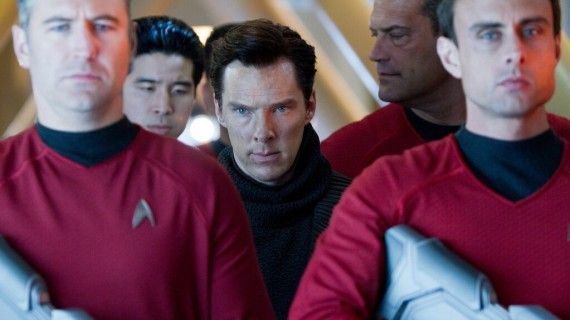
Things become even more interesting when you stack John Harrison – a.k.a. Khan Noonien Singh (Benedict Cumerbatch) – in Star Trek Into Darkness up against all the aforementioned villains. For example:
- All of these antagonists are “terrorists” with ulterior motives; Killian is seizing more power and control, the League of Shadow members want to instate a new world order (free of Gotham City) and Khan intends to resuscitate his fellow genetically-superior people from cryogenic sleep – in order to continue their centuries-old mission of wiping out inferior humans.
- Khan doesn’t use the smoke and mirror techniques favored by his peers. He’s the purest Machiavellian opponent of the lot, choosing to withhold the truth – while technically never lying about his intentions – and help others, so long as it serves his cause and grand scheme.
- The conflict between Kirk (Chris Pine) and Khan starts out personal (after the death of Captain Pike) then evolves into something more philosophical – going with your gut (Kirk) versus careful plotting and scheming (Khan) – whereas the fight between Spock (Zachary Quinto) and Khan begins more philosophical, then ends up becoming very personal after Kirk is left (almost) dead.
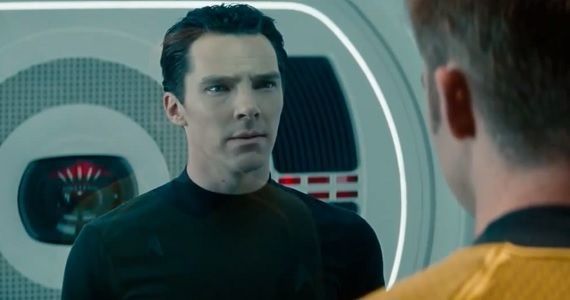
Khan in Star Trek Into Darkness – like The Mandarin in Iron Man 3 – begins as a ham-fisted (but, nonetheless, compelling) allegory for a real-world terrorist, before the audience gets to meet him up close and personal. It’s at that point when the film reveals that Admiral Marcus (Peter Weller) is the war hawk who freed Khan from his hibernating state and is manipulating him for his own purposes.
However, whereas Iron Man 3 made a joke of the old-school Mandarin – suggesting that the puppet-master is more dangerous than the puppet – Into Darkness does not sacrifice the qualities of classic Khan. Furthermore, Star Trek‘s idea that a weapon can be more dangerous than the person wielding it, feels less conventional by comparison (though, again, that’s partly a matter of narrative preference).
–
Secrecy: It’s Not Always a Good Thing

What’s all the more interesting about these films is that Cumberbatch playing Khan was one of the worst-kept “secrets” in recent blockbuster history (the same goes for Miranda Tate being Talia al Ghul in Dark Knight Rises); yet, the twist in Iron Man 3 has, again, prompted noticeably more controversy and disappointment within the larger geek community.
The cynical response would be to claim that fanboys (and fangirls) don’t like being tricked, but that argument doesn’t really hold up when examined under a microscope (like what’s been attempted here). Point being, the twists in the Dark Knight trilogy and Star Trek Into Darkness served a purpose beyond just surprising the viewers; they made the villainous characters stronger and enriched their relationships to the heroes (heightening the emotional impact of their actions and their metaphorical significance).
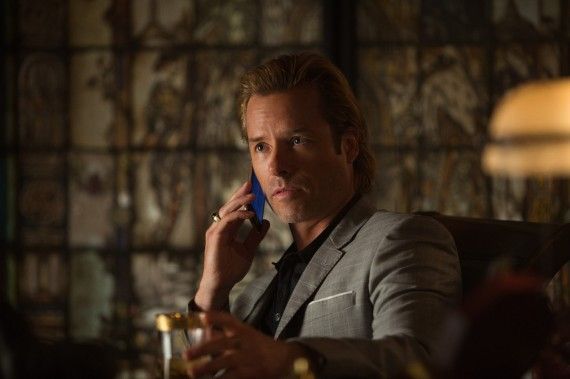
The Iron Man 3 twist may have pulled the rug out from under more people, yet it didn’t reveal much of anything new about either the heroes or villains – nothing that early segments of the film hadn’t strongly alluded to already – so it came off as kind of trivial and even insulting, for related reasons.
In the end, that seems to be where the difference lies: when it comes to the use of familiar or classic villains, these geeky genre films need to make sure any twist has a distinct storytelling purpose. (Admittedly, though, when that happens, it seems to become easier for fans to guess how, exactly, the baddies are going to be implemented. So, in the end, it’s hard for me to recommend that this “villains with a twist” trend should live on.)
–
What do you think? Is it possible, in this day and age, to pull the wool over fans’ eyes on these well-established comic book and geek franchise blockbusters, by keeping the villain’s real identity secret (assuming they were not created solely for these films)? Do all these twists seem forced – in an effort to fool the masses – or is there a secret to their successful execution?
______
Star Trek Into Darkness and Iron Man 3 are now in theaters.
The Dark Knight Trilogy is now available on DVD/Blu-ray.




